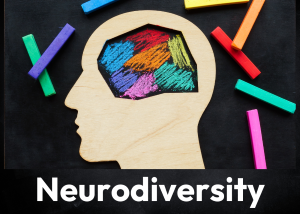Our new wellbeing campaign is Neurodiversity. Throughout this campaign we will share articles to help us understand neurodiversity, how it can affect people, ways to support our neurodivergent colleagues and share external support organisations in the UK, for those wishing to find out more.
In recent years, the concept of neurodiversity has gained significant attention, particularly in the context of workplace wellbeing. But what exactly is neurodiversity, and why is it important for us to understand and embrace it?
What is Neurodiversity?
Neurodiversity is an umbrella term that describes the variety of ways people think, learn, feel, and process information. It refers to the natural variation in human brain function and behaviour and encompasses a range of neurological differences, including autism, ADHD, Dyslexia and Dyscalculia, Dyspraxia, Dysgraphia and Tourette’s Syndrome and more. According to NHS England, an estimated one in seven people are neurodivergent, although with an increase in awareness and late diagnosis this in likely to be higher. The term was coined by sociologist Judy Singer in the late 1990s to promote the idea that neurological differences should be recognised and respected as a part of human diversity, much like cultural or ethnic diversity.
Understanding Neurodivergence
People who are neurodivergent have brains that function differently from what is considered “typical” or “neurotypical.” These differences can affect how individuals think, learn, and interact with the world. For example, someone with autism might have exceptional attention to detail and strong pattern recognition skills, while a person with ADHD might excel in creative thinking and problem-solving.
The Importance of Neurodiversity in the Workplace
Embracing neurodiversity in the workplace is not just about inclusivity, it also brings tangible benefits. Neurodivergent individuals often possess unique strengths and perspectives that can drive innovation and productivity. For instance, a study by JPMorgan Chase found that employees in their Autism at Work program were up to 140% more productive than their neurotypical peers.
Creating a neurodiversity-friendly workplace involves making small adjustments to accommodate different needs. This might include providing noise-cancelling headphones for those sensitive to sound, considering flexible work hours, or using clear and direct communication styles. By fostering an inclusive environment, we can help all employees thrive and contribute their best work.
In the coming weeks we will explore more about how we make small adjustments in the work place to create a neurodiversity-friendly workplace, to accommodate different needs.
